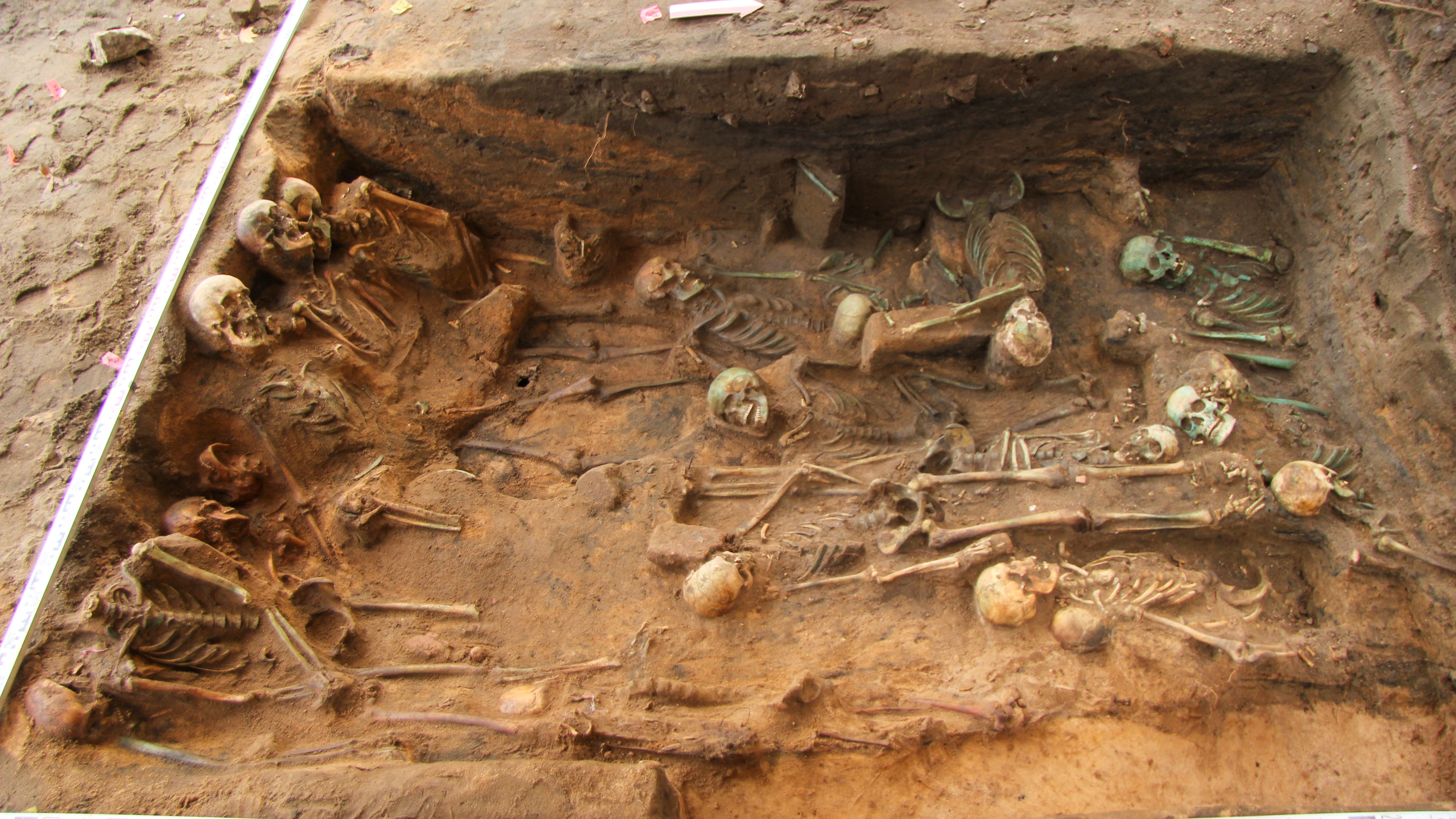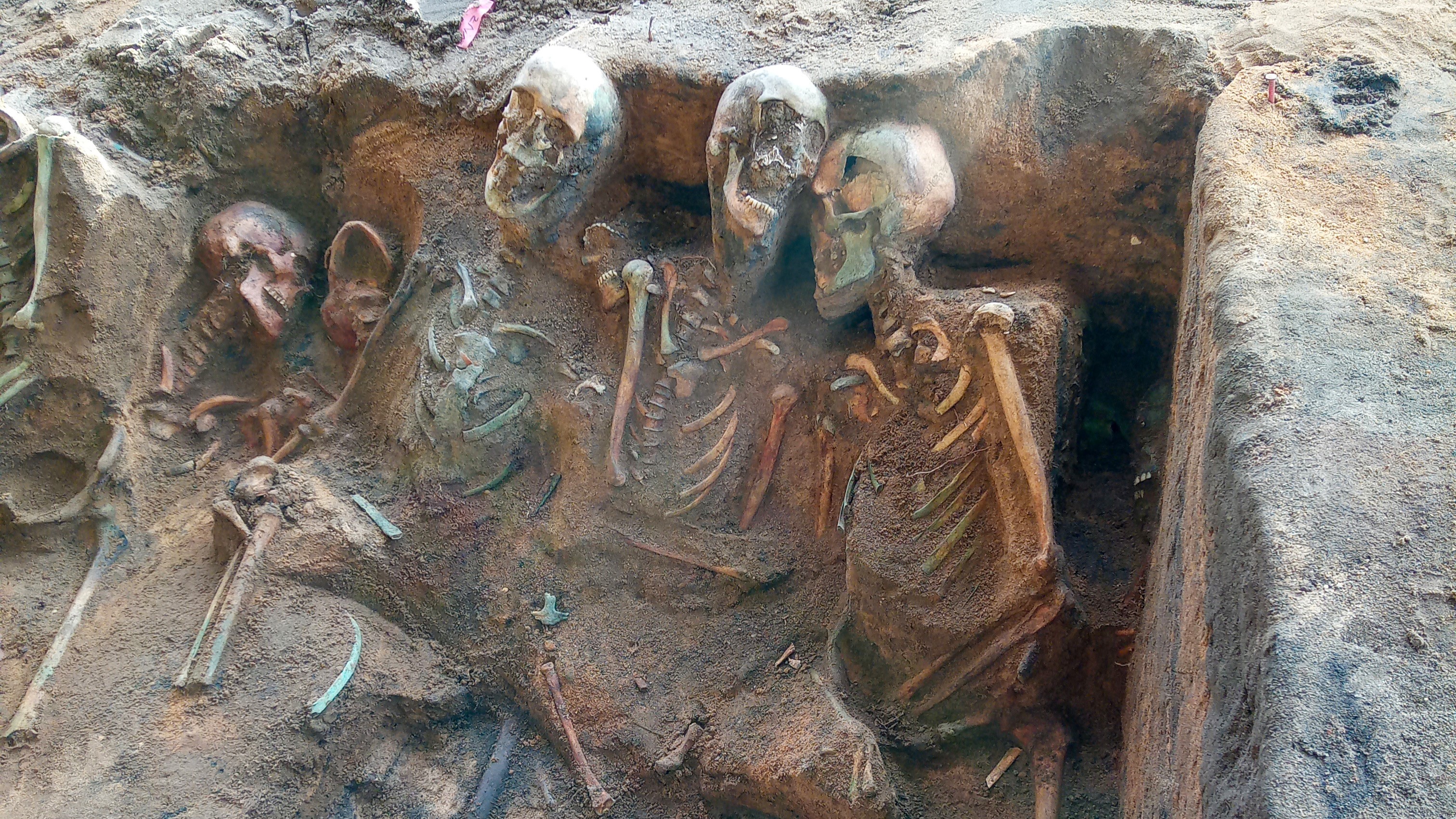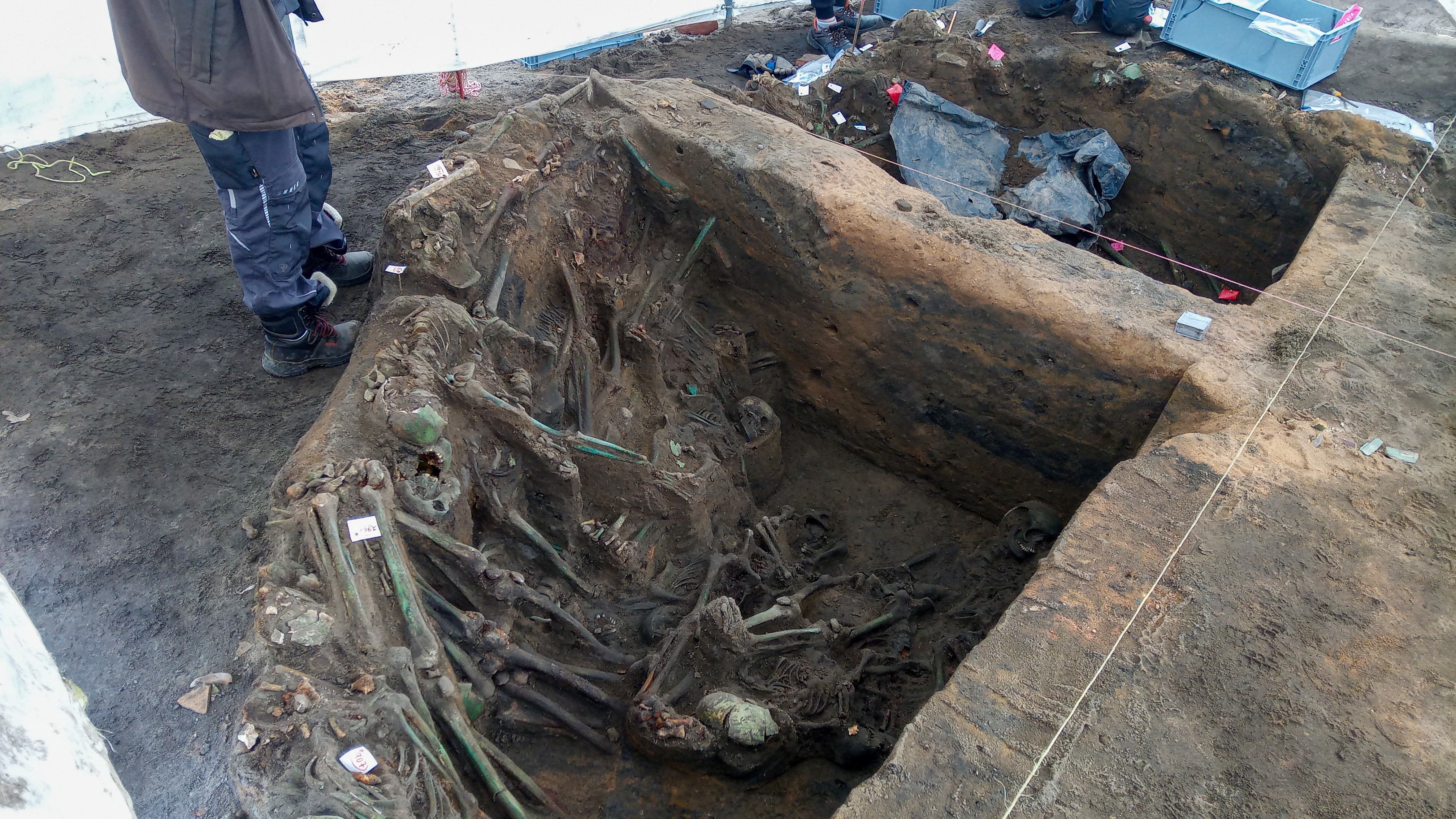
Plague pits containing the remains of at least 1,000 victims have been unearthed in southern Germany. The pits could together form the largest mass grave ever discovered in Europe, archaeologists say.
The excavations, which were carried out ahead of construction work in the city of Nuremberg, revealed eight pits each crammed with hundreds of skeletons belonging to adults, children and babies that date to between the late 15th and early 17th centuries. Archaeologists also found pottery shards and silver coins in two of the three pits they have finished excavating. Radiocarbon dating revealed the pottery coincides with plague outbreaks that occurred between 1622 and 1634, while the coins date to around 1619, according to a statement released by the archaeological excavation company In Terra Veritas.
"A discovery like that has never happened before and quite honestly, no one had thought this to be possible," Melanie Langbein, of Nuremberg's department for heritage conservation, said in the statement. "The site is of enormous importance to the city of Nuremberg."
Nuremberg suffered a series of plague outbreaks between 1533 and 1634 that together claimed the lives of roughly 30,000 people, according to the statement. As the bodies piled high, authorities ordered them to be buried in mass graves outside the city's churchyards.
Related: 1,000 burials and medieval village found in excavation of abbey destroyed in French Revolution
"Those people were not interred in a regular cemetery although we have designated plague cemeteries in Nuremberg," Langbein told CNN. "This means a large number of dead people who needed to be buried in a short time frame without regard [for] Christian burial practices."

People buried according to medieval Christian tradition were laid to rest with their head facing west and feet toward the east "to see Christ coming out of the east at the Doom," Live Science previously reported. The new excavations, on the other hand, revealed skeletons arranged in a seated position, facing in different directions and stacked one on top of another to fill every bit of available space. Archaeologists also unearthed bodies lying on their sides with the remains of infants and babies wedged in the gaps between them.
Some of the remains had been stained green due to deposits from metal processing plants that were built near and on top of the graves in the centuries that followed, according to the statement.

So far, only three of the eight pits have been fully excavated and the number of dead in them counted. One of the pits contained 280 bodies, archaeologists said, although they found evidence that some may have been removed and disturbed since the original burial. Another pit yielded 150 bodies, but this number is also shrouded in uncertainty due to a nearby World War II bomb explosion that blew some of the skeletons apart in 1943.
Archaeologists have tallied and removed up to 1,000 bodies from the ground, but they expect this number will exceed 1,500 in the coming weeks as excavations continue. If it does, the site in Nuremberg may become the biggest scientifically excavated mass burial in Europe, according to the statement.
"The skeletons are in very good shape for examination, despite the destruction that occurred," Florian Melzer, an anthropologist with In Terra Veritas, said in the statement. "We can now detail out all [the] information that is kept in those bones, [for example] the prevalence of different kinds of cancer, genetic mutations that show in skull, age and sex determination, status of the teeth and conclusions from that to the general health and life circumstances in this period."







